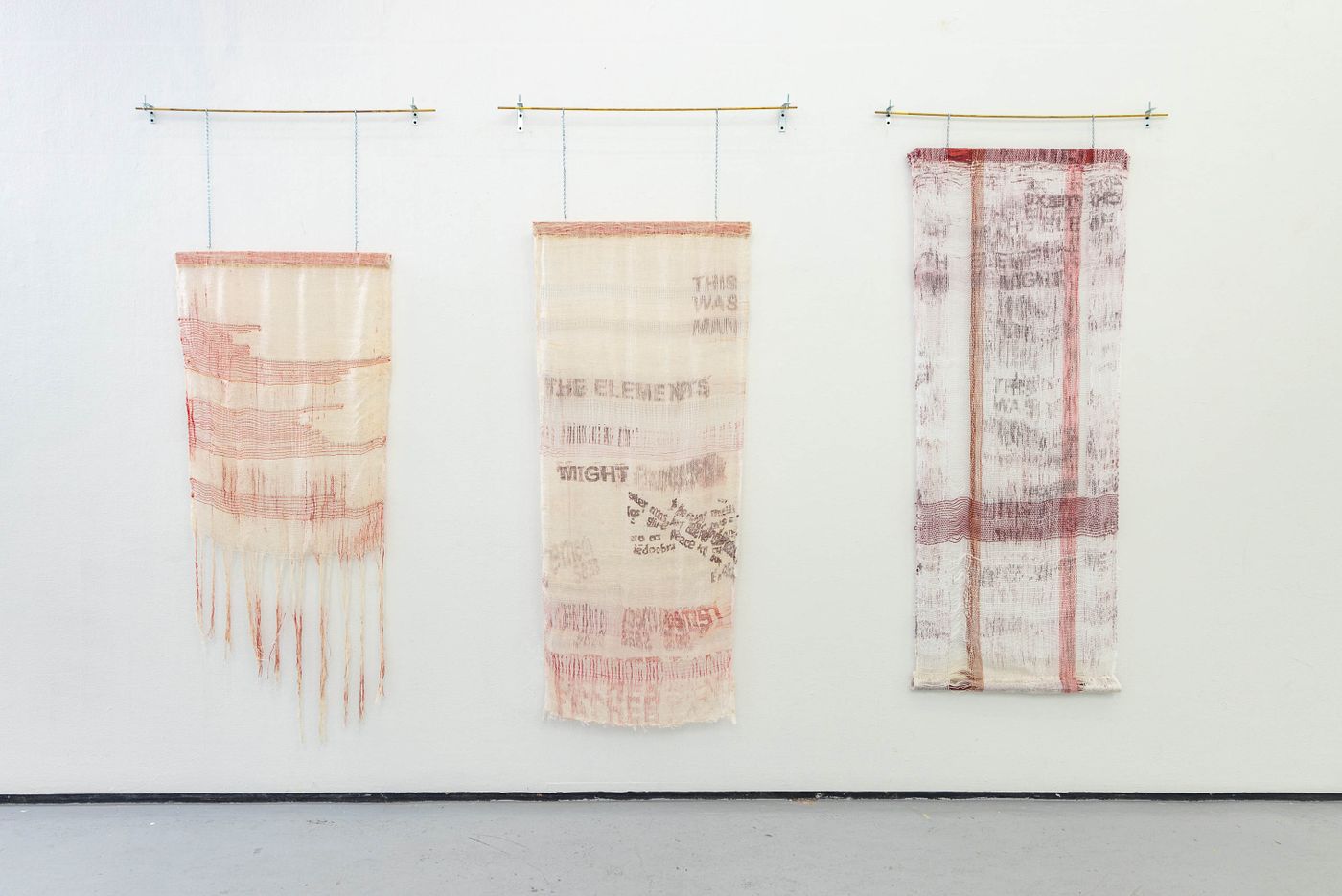
left to right: Redacted Stanzas, THE ELEMENTS MIGHT STAND UP, THE ELEMENTS MIGHT, 2022. Woven on rigid heddle loom with dye and leno-weave; 25 x 62 in., 25.5 x 62.5 in., 26 x 67 in. Photo: Meghan Olson.
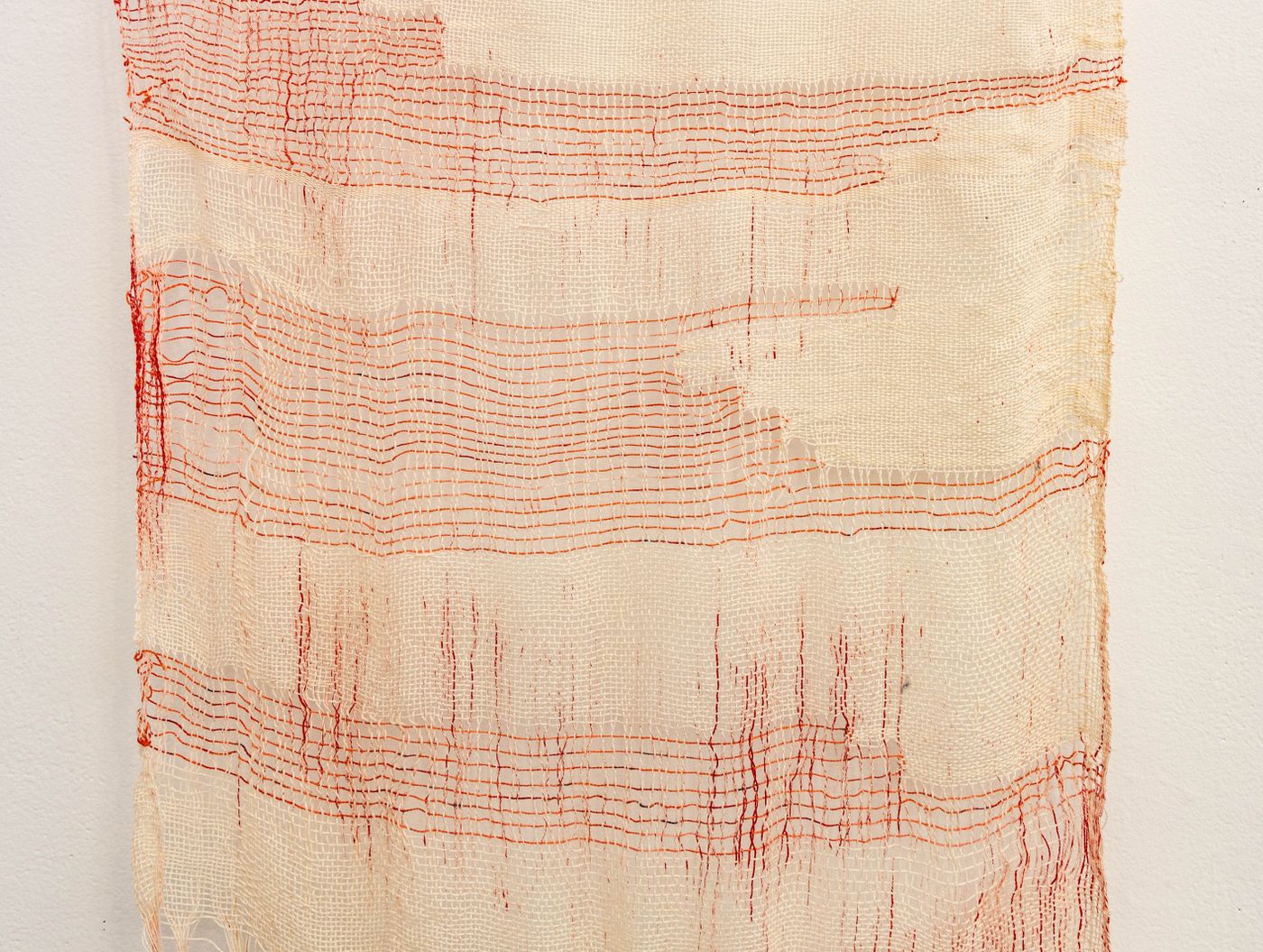
Redacted Stanzas (detail), 2022. Woven on rigid heddle loom with dye and leno-weave; 25 x 62 in. Photo: Meghan Olson.
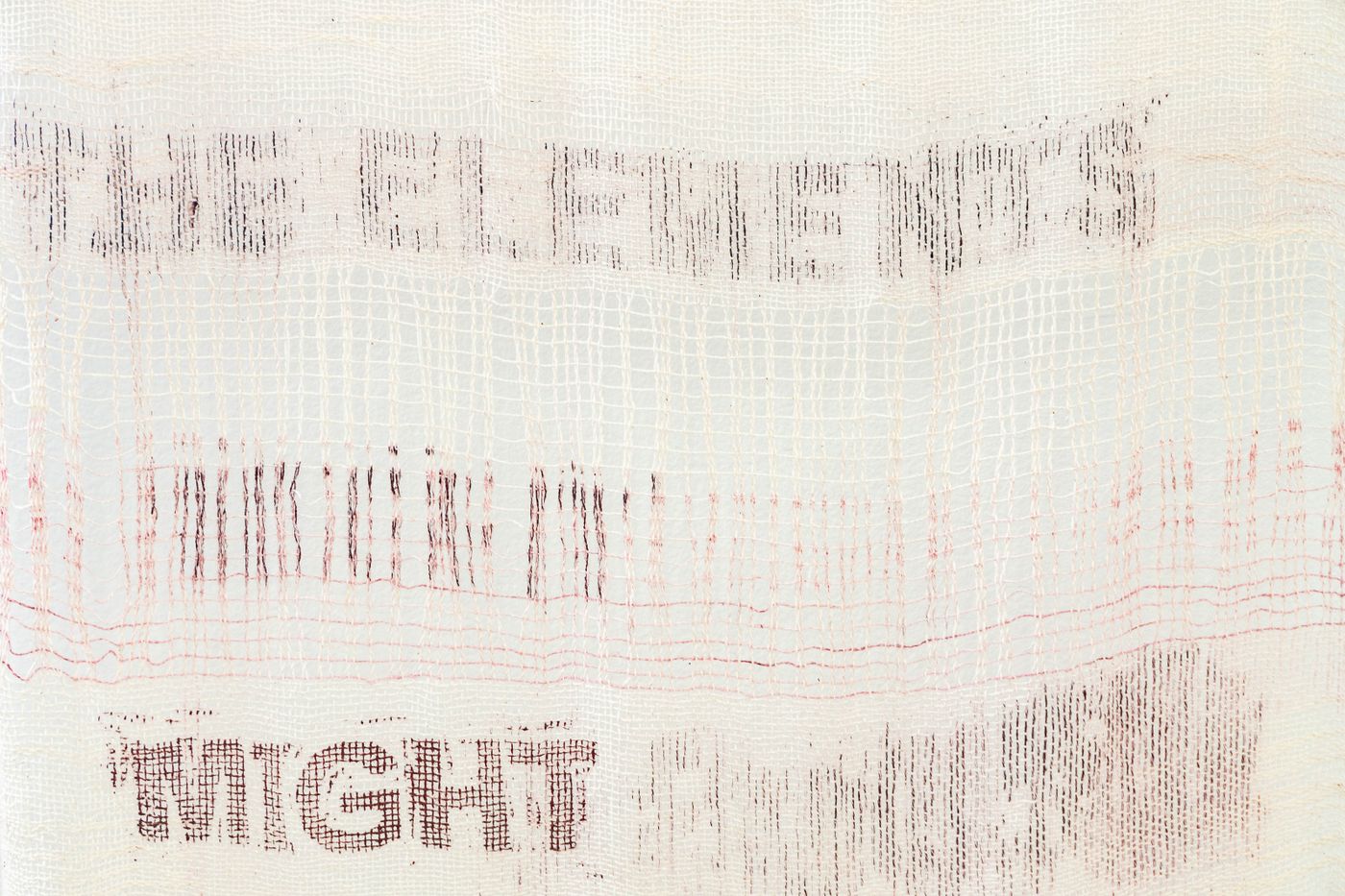
THE ELEMENTS MIGHT STAND UP (detail), 2022. Woven on rigid heddle loom with dye and leno-weave; 25.5 x 62.5 in. Photo: Meghan Olson.
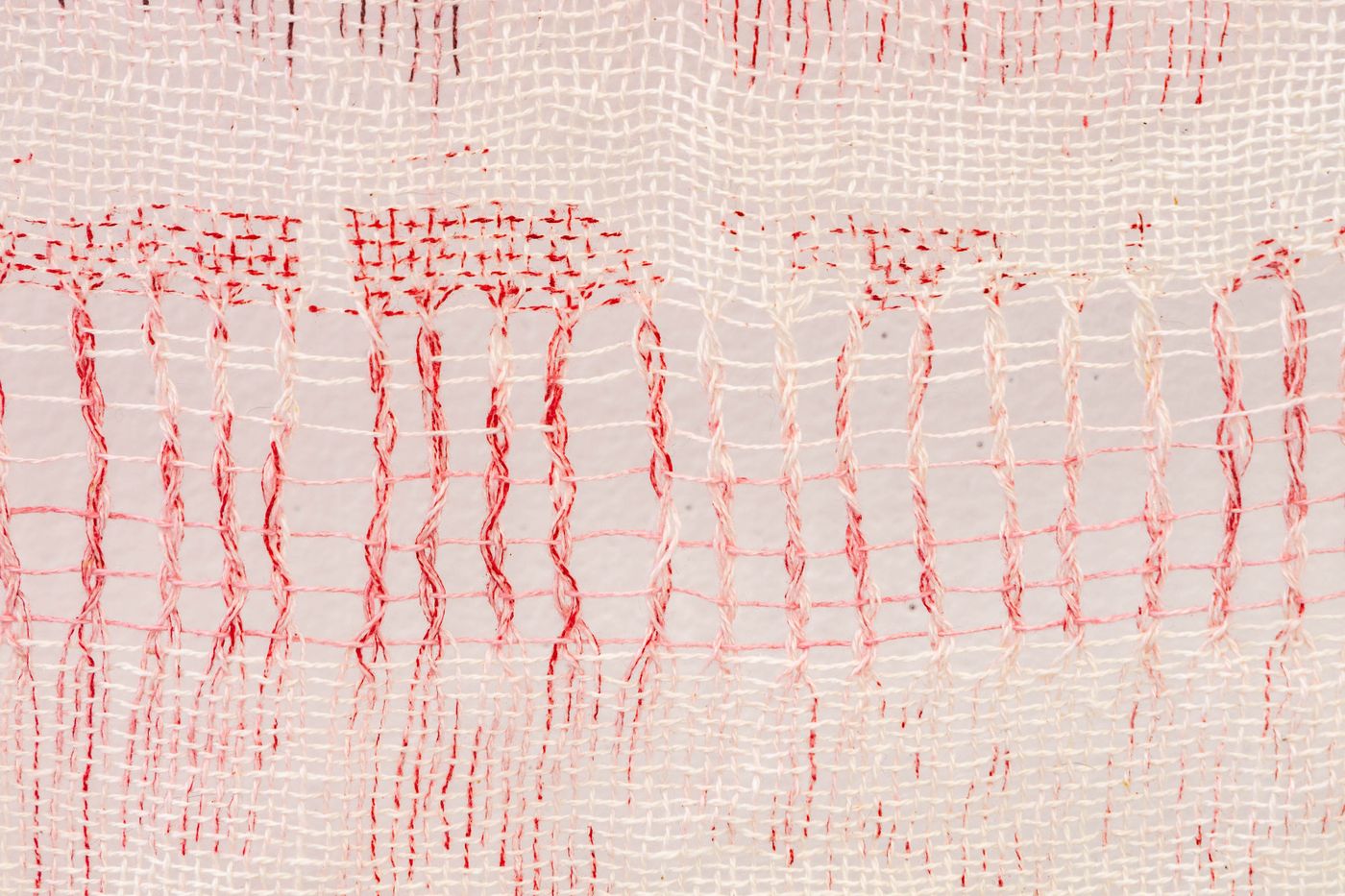
THE ELEMENTS MIGHT STAND UP (detail), 2022. Woven on rigid heddle loom with dye and leno-weave; 25.5 x 62.5 in. Photo: Meghan Olson.
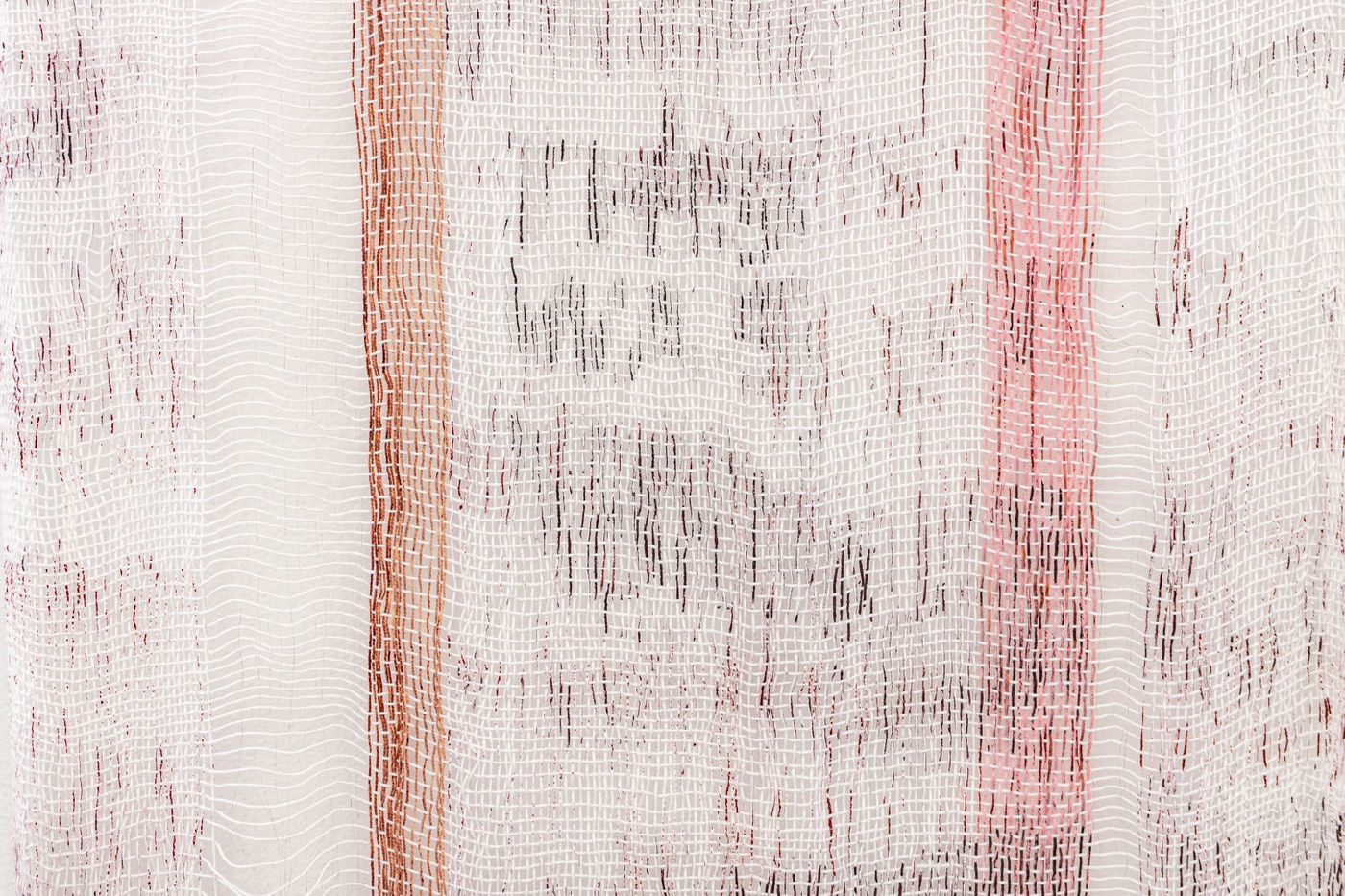
THE ELEMENTS MIGHT (detail), 2022. Woven on rigid heddle loom with dye and leno-weave; 26 x 67 in. Photo: Meghan Olson.
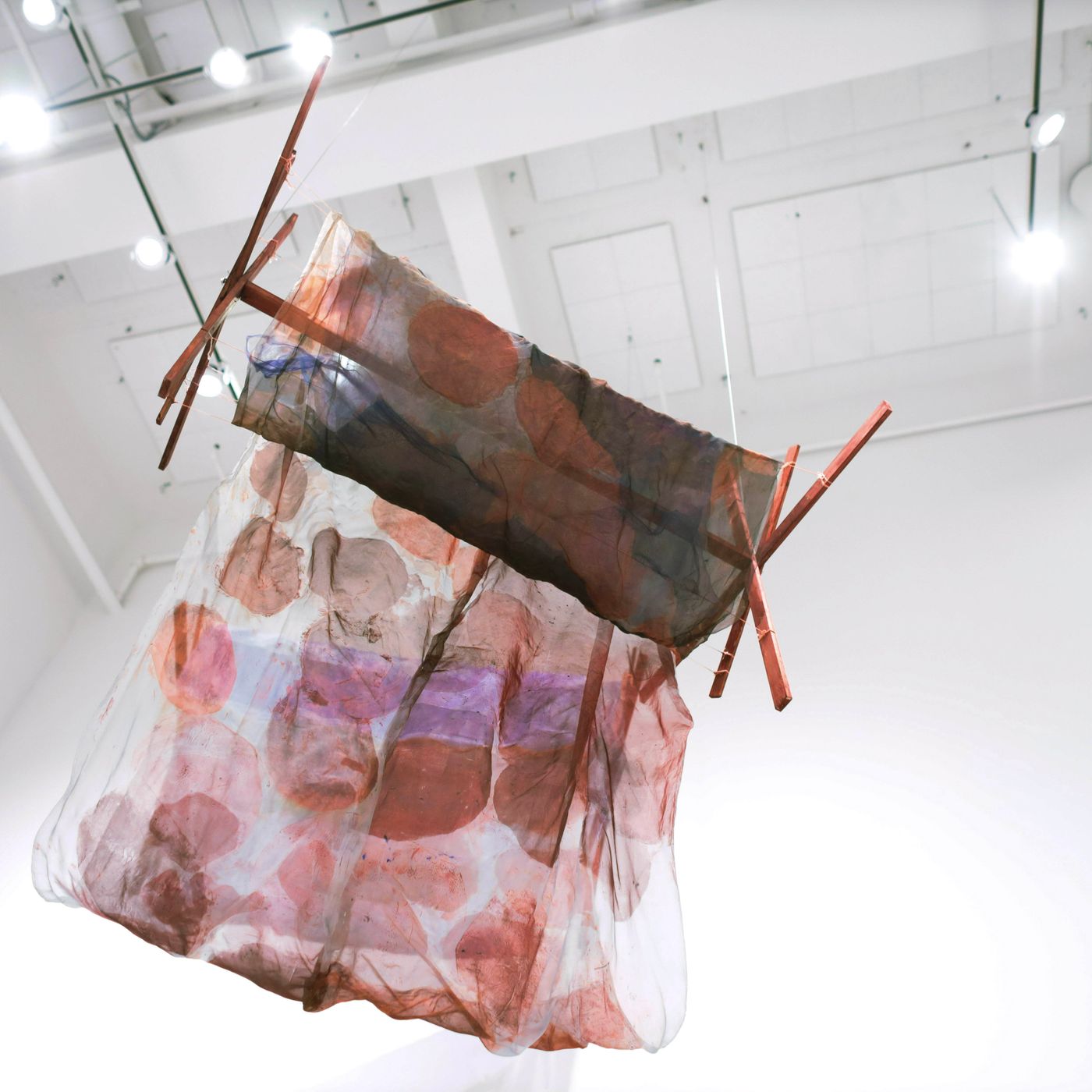
Spinning Wheels, 2022. Dye on silk organza; 112 x 96 x 36 in. Photo: Opal Ecker DeRuvo.
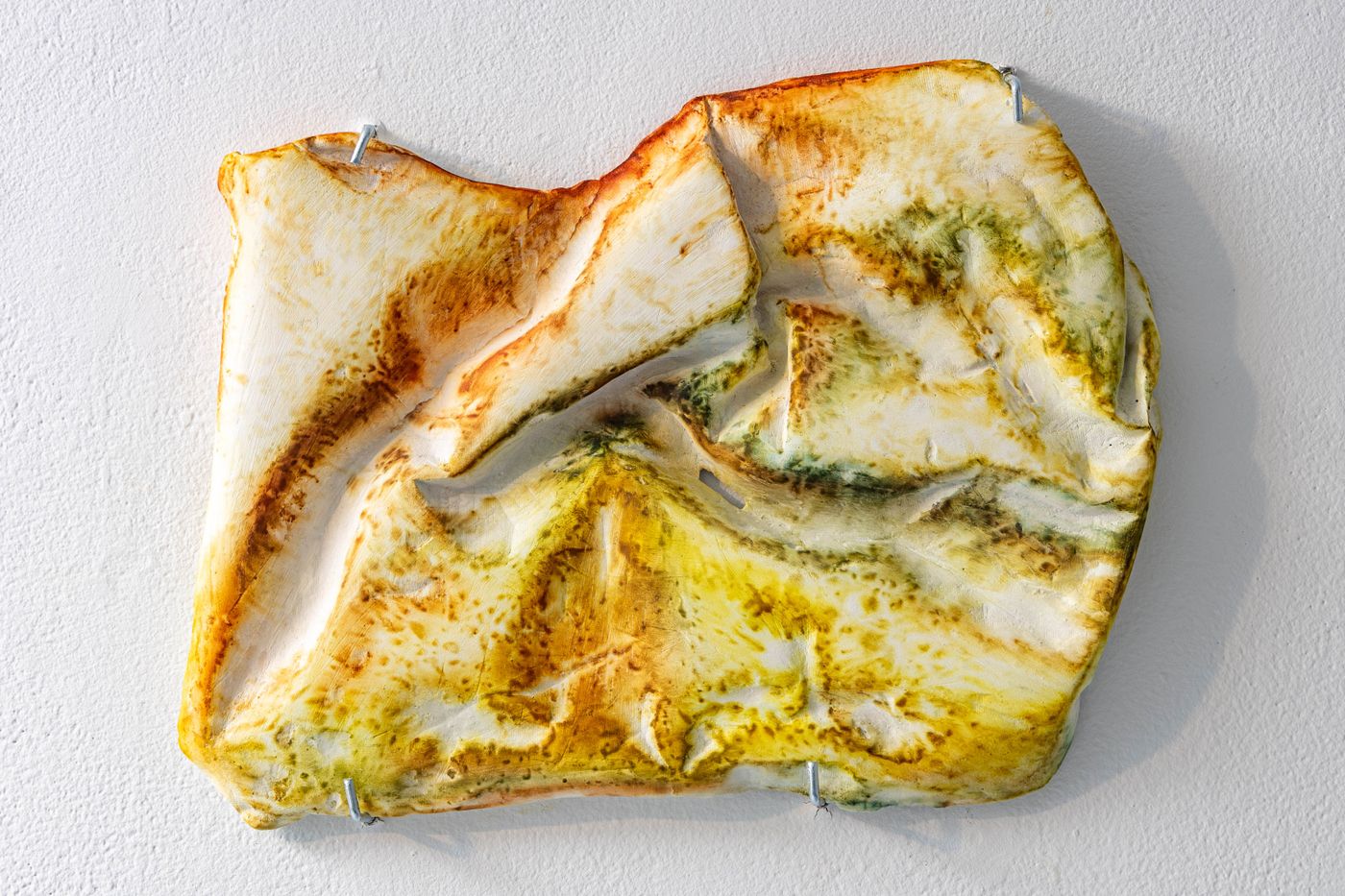
Softness, 2022. Plaster and dye; 15.5 x 12 in. Photo: Meghan Olson.
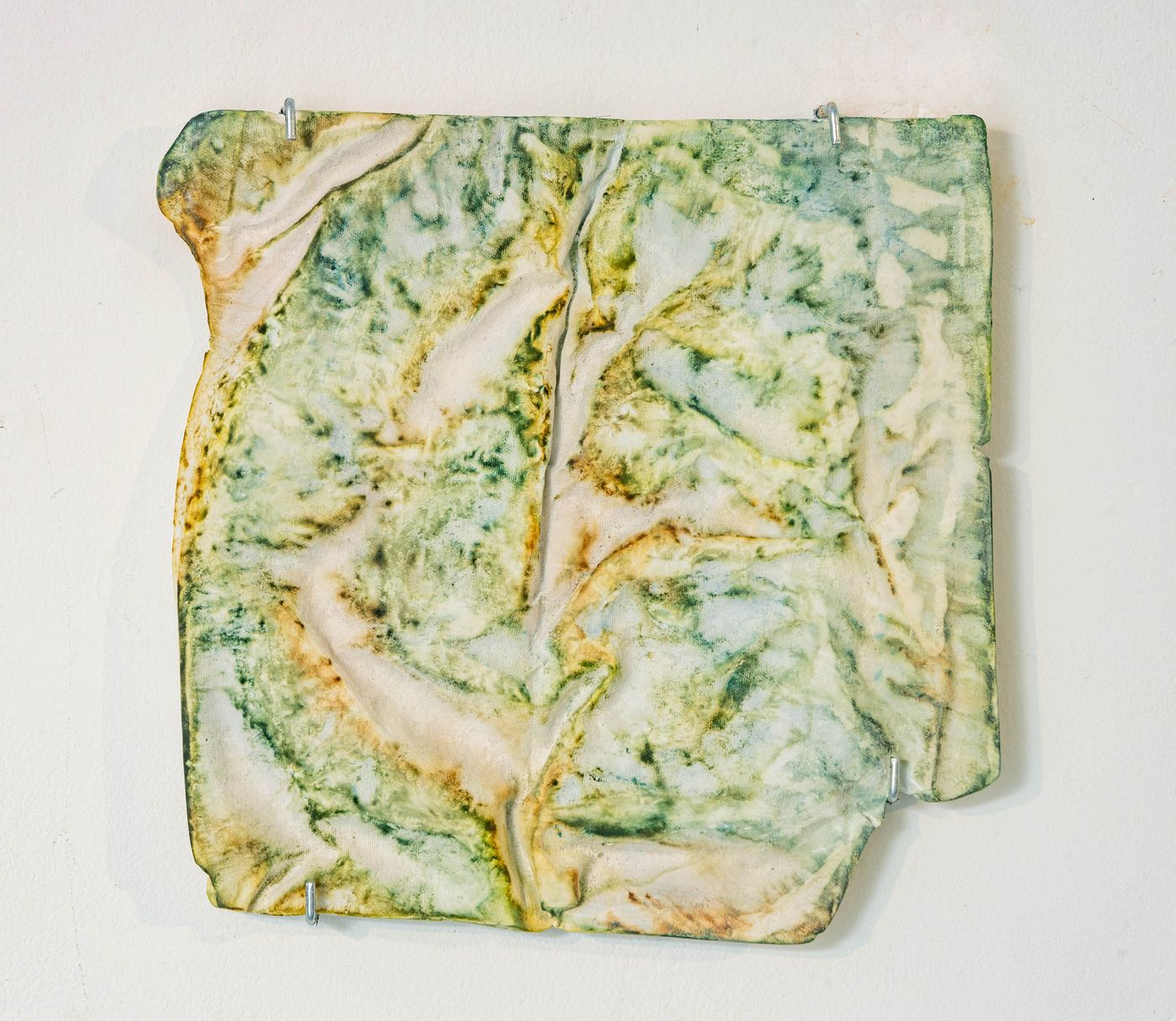
Fabric, 2022. Plaster and dye; 12.5 x 12.5 in. Photo: Meghan Olson.
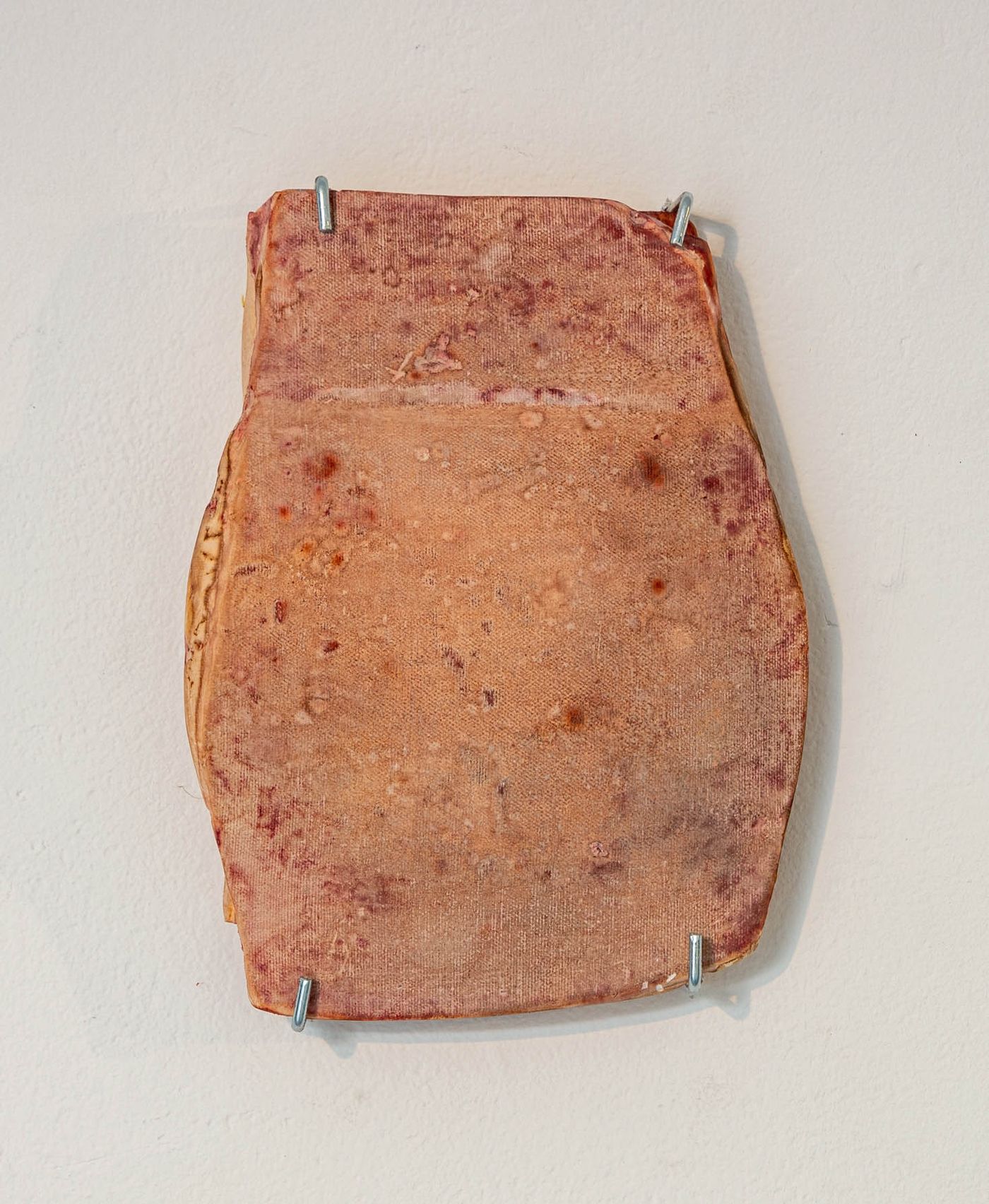
Lightness, 2022. Plaster and dye; 7.75 x 10 in. Photo: Meghan Olson.
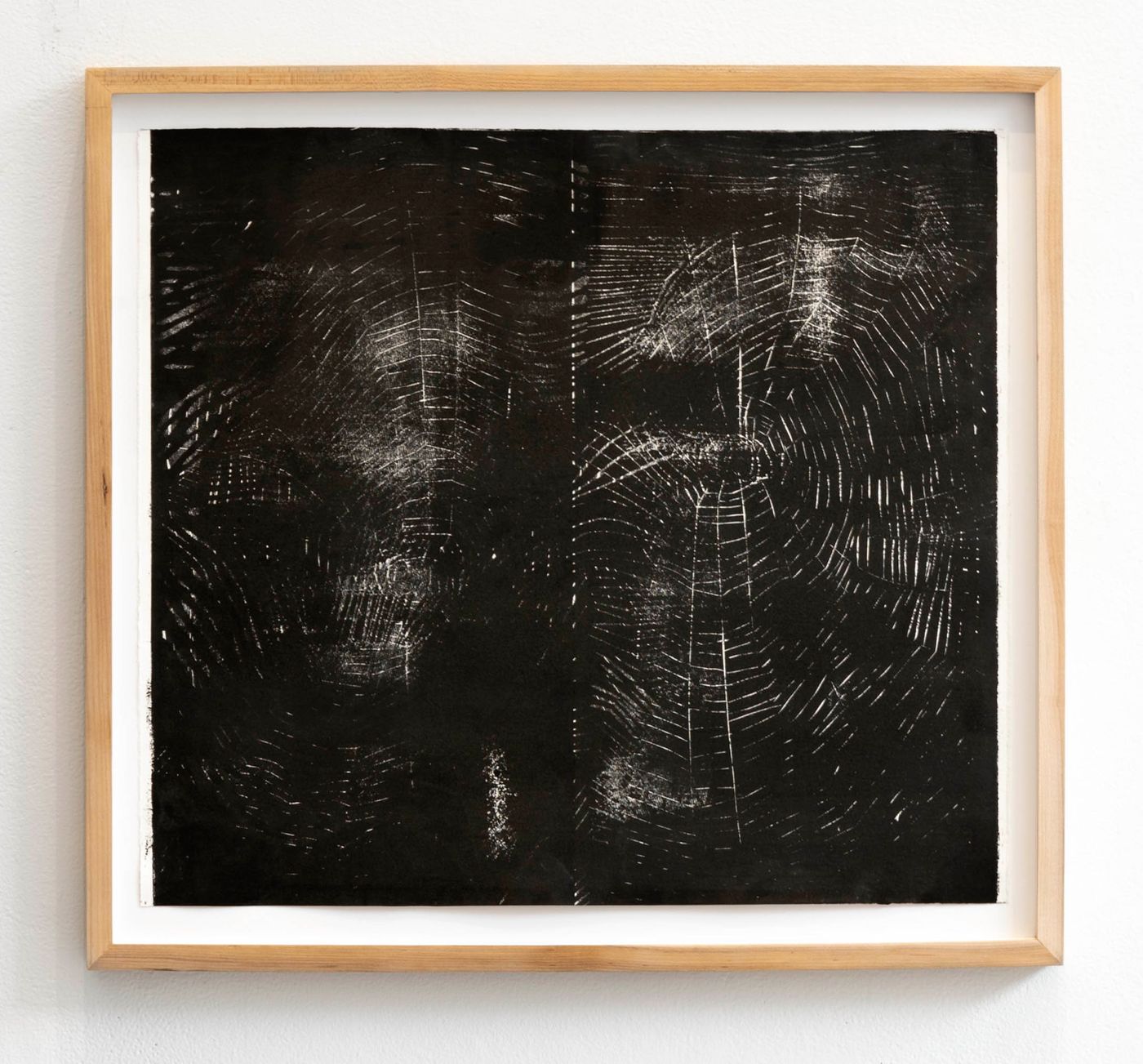
Spider Web on Two Nights, 2022. Woodcut on paper; 24 x 21.5 in. Photo: Allison Minto.
Patricia Orpilla
b. 1993, Kansas City, Missouri
Referencing architectural phenomena, historical narratives, and semiotics, I create textiles, objects, paintings, and prints. Using an interdisciplinary process, I create spatial and bodily poetry to engage my interests in record-keeping and the "life of objects." Who is permitted authorship and what survives or is preserved is a historical question I have about power. I believe old, defunct, or obsolete technologies can illuminate our present conditions.
I reflect on speed as a material related to the human condition, and why the field of sociology emerged in response to the Industrial Revolution. I gravitate towards themes of movement, migration, circulation, expansion, mechanization, colonization and the psychological impact of these various social conditions. I view language and religion as records within these phenomena.
My weavings engage my interest in pre-industrial processes and material culture through their site-specific surfaces. The text in my work is typically found from locations like the archive or architectural monuments. The silk organza and leno-woven surfaces invoke transparency and opacity as various metaphors. The transformation of language over time is of interest in my recent work. I have been researching religious texts from the Philippines. Tagalog is a language my mom speaks, and it is riddled with English and Spanish.
My plaster casts are the inverse of my weavings, and indicate the body as present through the bulbous surfaces that fabric records. My woodcut prints reference fingerprints and spider web environments and question the archives of invention. At times, my armatures appropriate historical objects – for example a pre-industrial spinning wheel or a room divider. My guiding forces are textile history, concrete poetry, mechanization, and the body related to speed and therefore weaving, printmaking, typography have become naturally occurring features of my process.